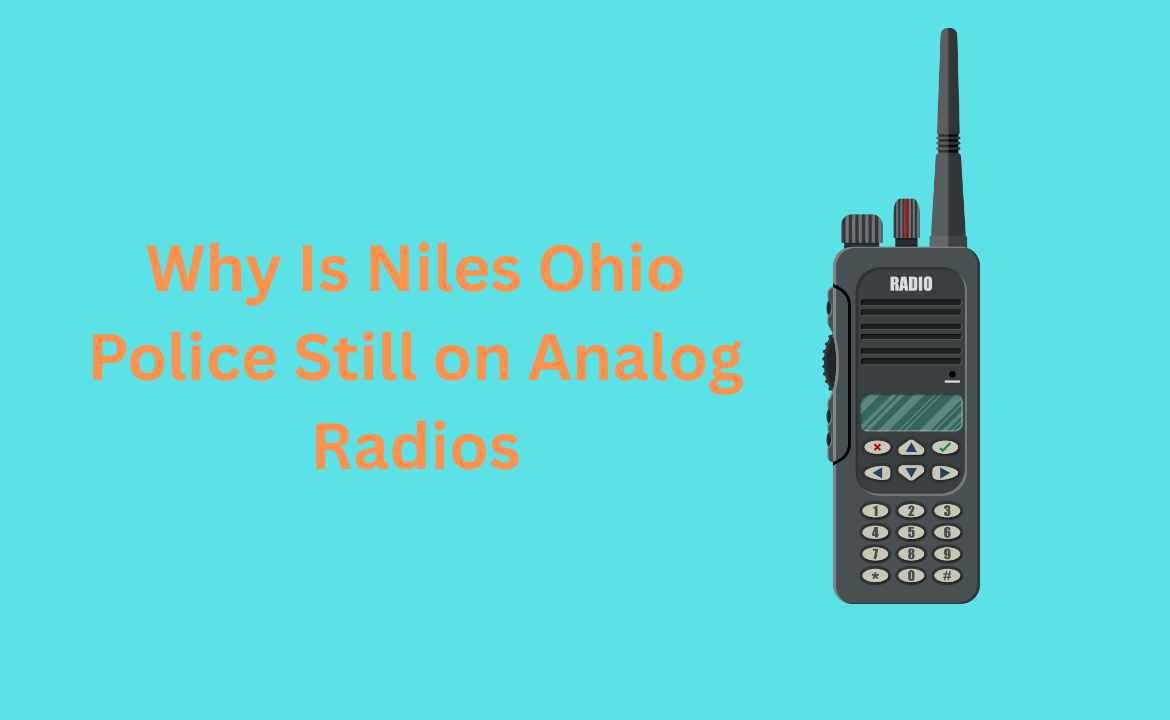Many residents and law enforcement enthusiasts have asked the question: why is Niles Ohio police still on analog radios in a time when digital communication is widely adopted? While many police departments across the country have made the switch to digital systems, Niles continues to rely on analog technology. This decision is shaped by various factors, including budget constraints, operational needs, and infrastructure readiness.
This article explores the reasons behind Niles Police Department’s continued use of analog radios and how it impacts public safety, communication, and modernization efforts.
Budget Constraints and Funding Issues
One of the primary reasons Niles Ohio police still use analog radios is financial limitation. Upgrading an entire department’s communication system from analog to digital can be costly. The transition involves purchasing new radios, base stations, repeaters, and software. For smaller cities like Niles, Ohio, these upgrades might not be financially viable in a short span.
The police department must balance its resources across various needs, such as personnel training, patrol vehicles, and crime prevention tools. Communication upgrades, though important, might be viewed as less urgent than other operational demands. Grant funding and municipal budgets may not always prioritize digital communication, delaying the switch.
Compatibility with Local Agencies
Another factor in staying with analog radios is compatibility with surrounding emergency services. If neighboring departments such as fire, EMS, or other law enforcement agencies are still using analog systems, it makes practical sense for Niles Police to remain on analog as well.
Inter-agency communication during emergencies and joint operations is critical. Using the same radio platform avoids the complications of cross-system communication, which might otherwise require extra equipment like patches or dual radios. This ensures smooth coordination during high-pressure incidents such as accidents, search-and-rescue operations, or natural disasters.
Infrastructure and Maintenance
The current analog radio infrastructure in Niles is likely well-established and maintained. Analog systems have been in place for decades, and the personnel are trained to use them effectively. For departments that have functioning analog systems with good coverage and reliability, there might be little incentive to overhaul the system.
Analog radios are also generally easier to repair and less expensive to maintain. Digital systems, while advanced, often require specialized servicing and more expensive parts. For a department working with limited technical support, staying with analog may be the safer choice to avoid service disruptions.
Operational Simplicity
Analog radio systems are known for their simplicity. Unlike digital systems, analog radios do not require encryption keys, firmware updates, or complex software programming. This makes them straightforward to operate, especially in high-stress or emergency.
Many officers are already familiar with analog radio protocols. A transition to digital would mean additional training and adjustments in daily procedures. While digital systems offer enhanced clarity and encryption, the learning curve and transitional period could temporarily affect efficiency.
For a department that values dependable, easy-to-use tools, analog radios still serve the purpose effectively.
Public Transparency and Scanner Access
An interesting aspect of analog radio usage is public access to radio scanners. Many community members, journalists, and emergency enthusiasts rely on police scanners to stay informed. Analog radios can be accessed with basic equipment, allowing the public to monitor police activity in real-time.
This transparency can build community trust and engagement. On the other hand, digital systems—especially encrypted ones—block scanner access. For departments that value public oversight and accountability, staying on analog offers a layer of openness that digital encryption removes.
While this might raise concerns about criminal misuse, the balance between transparency and operational security continues to influence decision-making.
Challenges with Digital Radio Transition
Digital radios are not without their drawbacks. While they offer clearer audio and encryption, digital systems can fail in weak signal areas. Analog radios tend to degrade more gradually, meaning officers can still hear a faint or fuzzy signal, whereas digital might cut off completely.
Moreover, some digital systems require constant software updates and licensing fees. These long-term costs, combined with initial installation fees, can make the transition burdensome. For a department with limited IT support, this can pose serious operational challenges.
In a city like Niles, where terrain or infrastructure could affect signal quality, staying with analog ensures more reliable communication in all parts of the city.
Future Considerations
Despite the current use of analog systems, Niles Police may eventually switch to digital radios. Federal and state-level communication standards are slowly pushing departments toward digital platforms. Grant opportunities, technological advancements, and increased inter-agency collaboration could eventually make the upgrade both necessary and feasible.
The city may also explore hybrid systems, which allow analog and digital radios to coexist. This would give the department flexibility during the transition period. However, for now, the analog system still meets operational needs without compromising performance or safety.
Conclusion
Understanding why Niles Ohio police still use analog radios requires looking beyond just technology. Budget limitations, inter-agency compatibility, ease of use, and public access all contribute to this decision. While digital systems are often seen as superior, they come with complexities and costs that not all departments are ready to handle.
